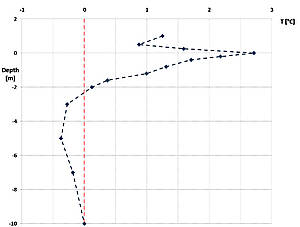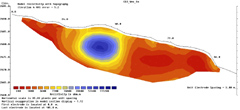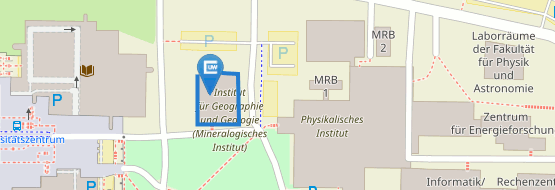Spatial assessment of permafrost characteristics and dynamics in alpine periglacial environments (SPCC)
 | SPCC 3: Spatial assessment of permafrost characteristics and dynamics in alpine periglacial environments |  |

Project information:
SPCC 3 is part of the Bündel-project “Sensitivity of Mountain Permafrost to Climate Change” (SPCC) funded by the German Research Foundation (DFG – Deutsche Forschungsgemeinschaft).
Within the research project SPCC3 the sensitivity of alpine permafrost environments to climate change is investigated with a combined approach. Different methodologies are used for a detailed characterization of the permafrost in unconsolidated sediments concerning distribution, permafrost and active-layer depth, ice content, temperature and temporal variability.
Geophysical mapping and sounding (2D and quasi 3D) is implemented for an in-depth analysis of the subsurface lithology. Furthermore surface and subsurface temperature monitoring and thermal offset analyses are performed particularly with respect to different surface material properties (coarse-grained to fine-grained).
Spatio-temporal variability of alpine permafrost dynamics comprising aggradation, degradation and creep are determined by direct temperature measurements within representative shallow boreholes, near-surface temperature monitoring, geoelectrical monitoring and DGPS surveying.
Investigation areas:
- Glacier forefields Murtèl, Muragl and adjacent landforms, Upper Engadine, Switzerland

Fig. 1: Temperature logging (borehole and near-surface temperatures) in coarse-grained sediments within the glacier forefield Murtèl. The picture was taken during field work (DGPS) in August 2009.

Fig. 2: Mean annual temperature (01.10.2008-01.10.2009) at the borehole location shown in Fig. 1.


Fig. 3: Electrical resistivity tomograms from the borehole location in Fig 1:
(a) with low resistivities as measured at a site with rather fine-grained sediments
(b) with a distinct permafrost body under coarser blocks
Note: resistivity values > 10 k Ohm are indicated with bluish colours (Click to enlarge the pictures!)
Staff:
- PD Dr. Christof Kneisel (supervisor)
Department of Physical Geography, University of Würzburg - Dipl. Geogr. Tobias Rödder (PhD student)
Department of Physical Geography, University of Würzburg
Links to the other Bündel-projects:
- SPCC 1: “Ground-atmosphere modelling of permafrost evolution: Strategies to combine RCM and subsurface simulations”
- SPCC 2: “Quantitative assessment of Alpine permafrost degradation using coupled geophysical and thermal monitoring systems”
- SPCC 4: “Sensitivity of rock permafrost to regional climate change scenarios and implications for rock wall instability”
- SPCC 5: “Monitoring and process analysis of permafrost creep and failure in changing temperature regimes”


